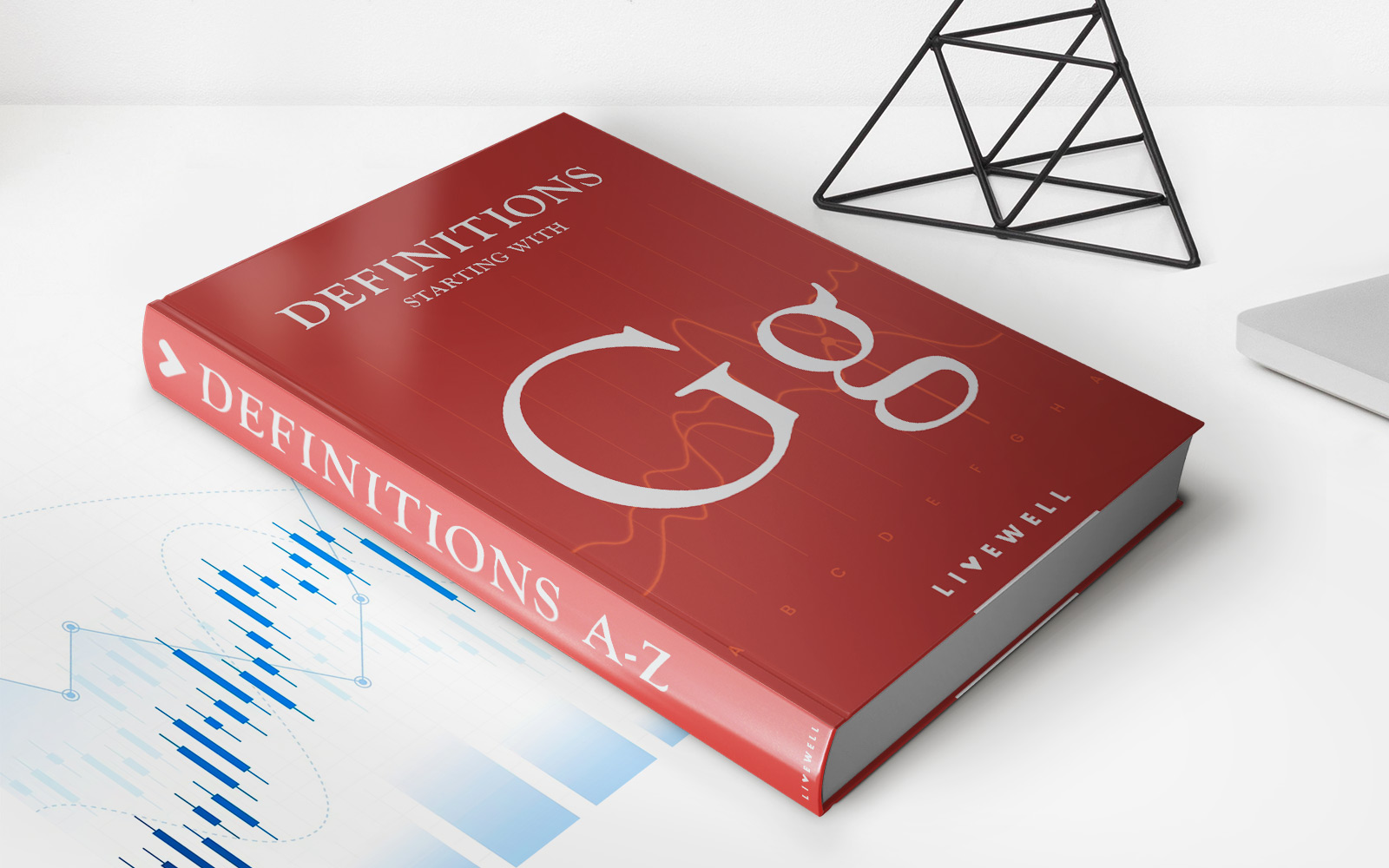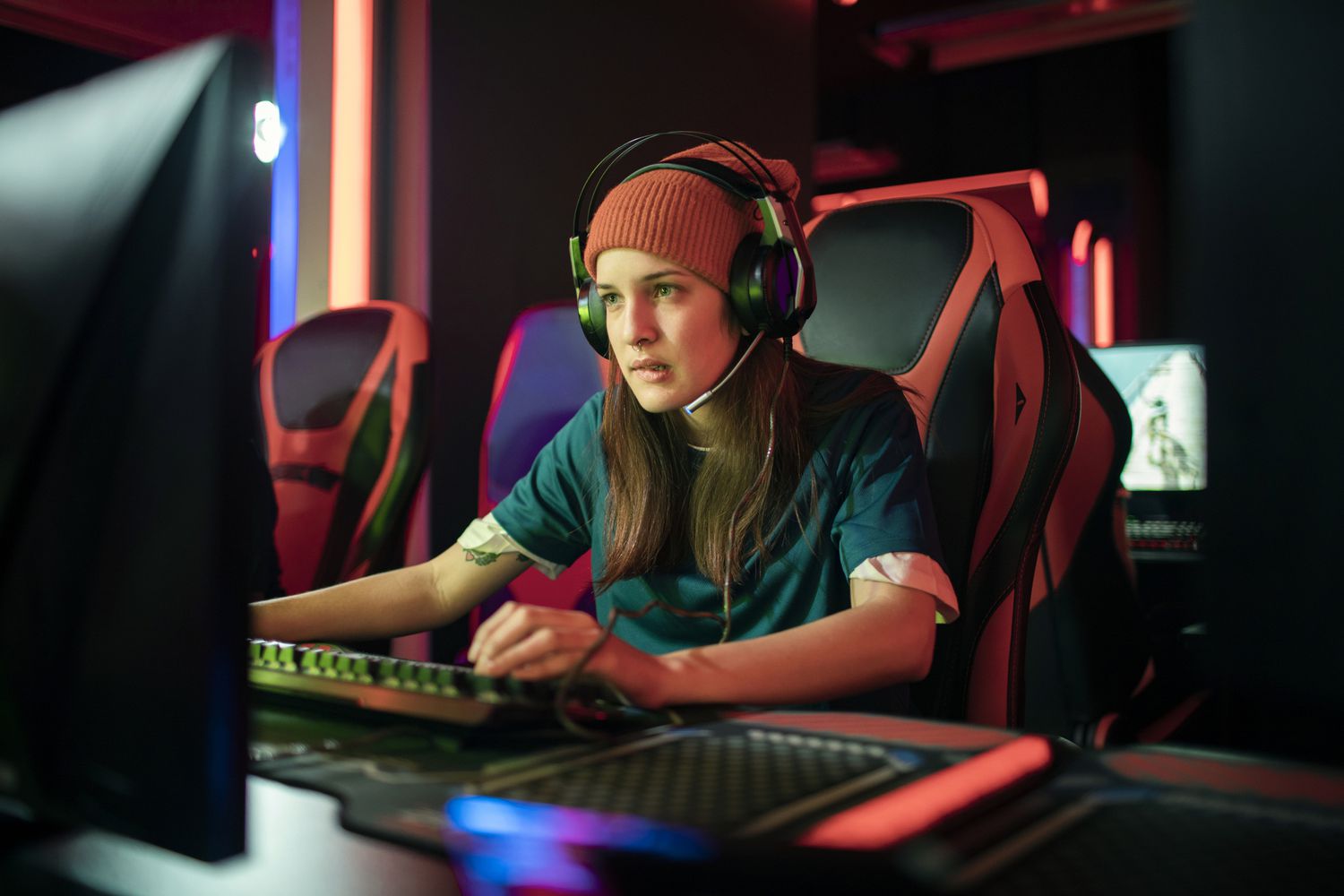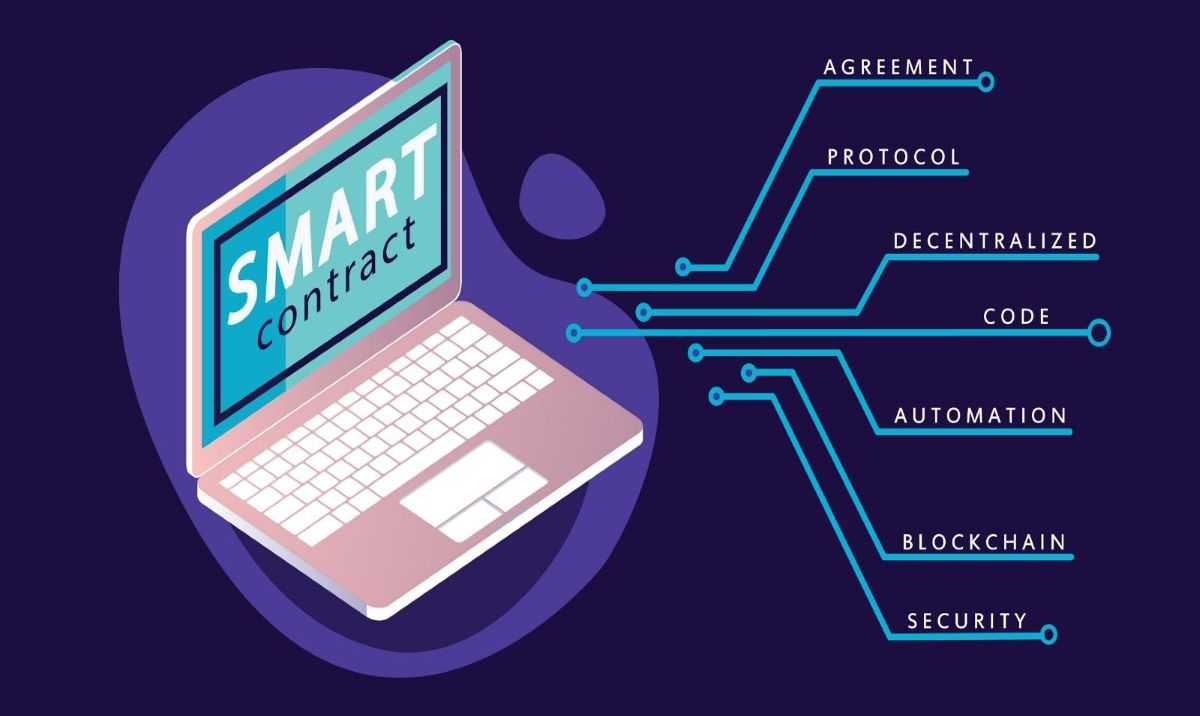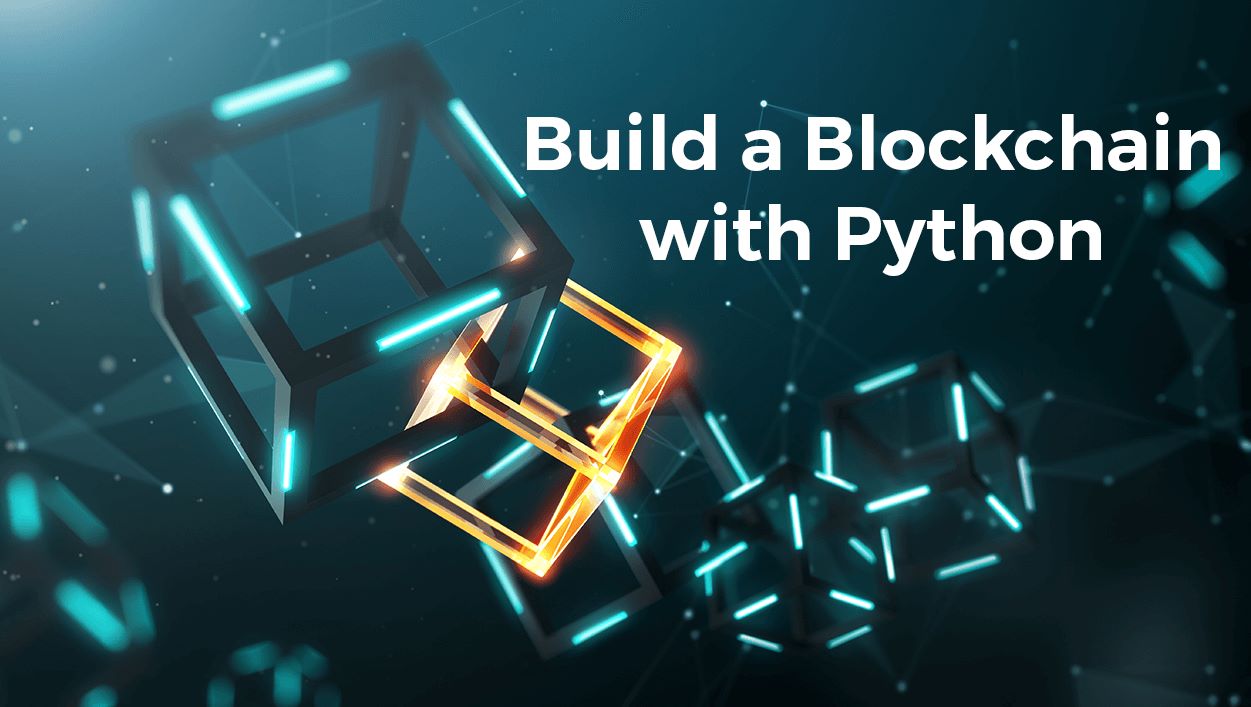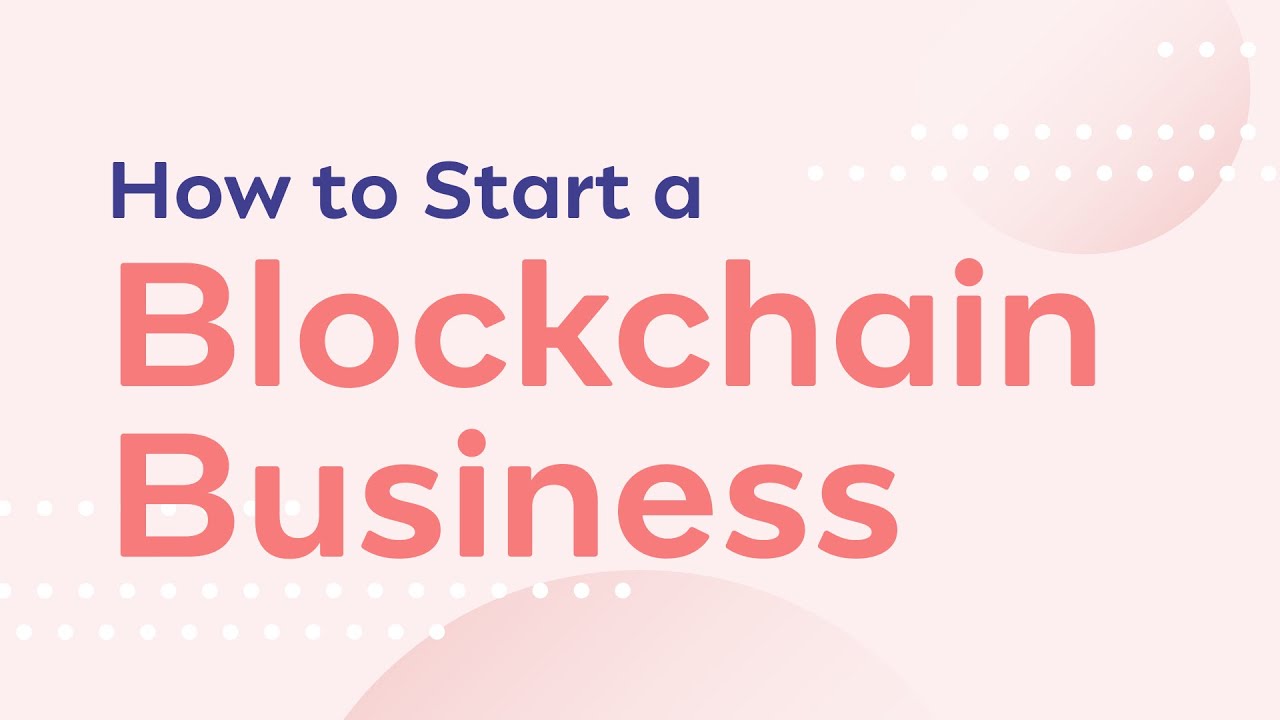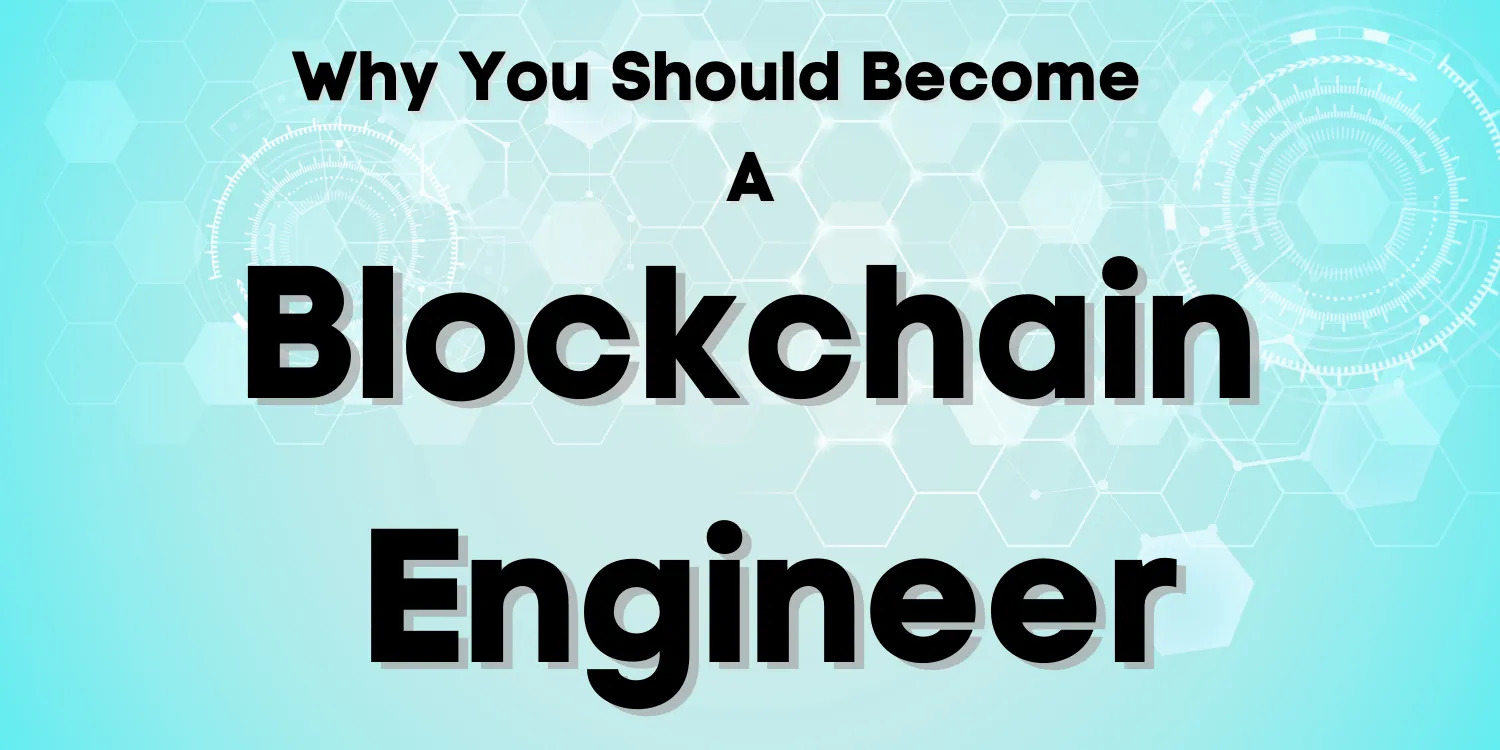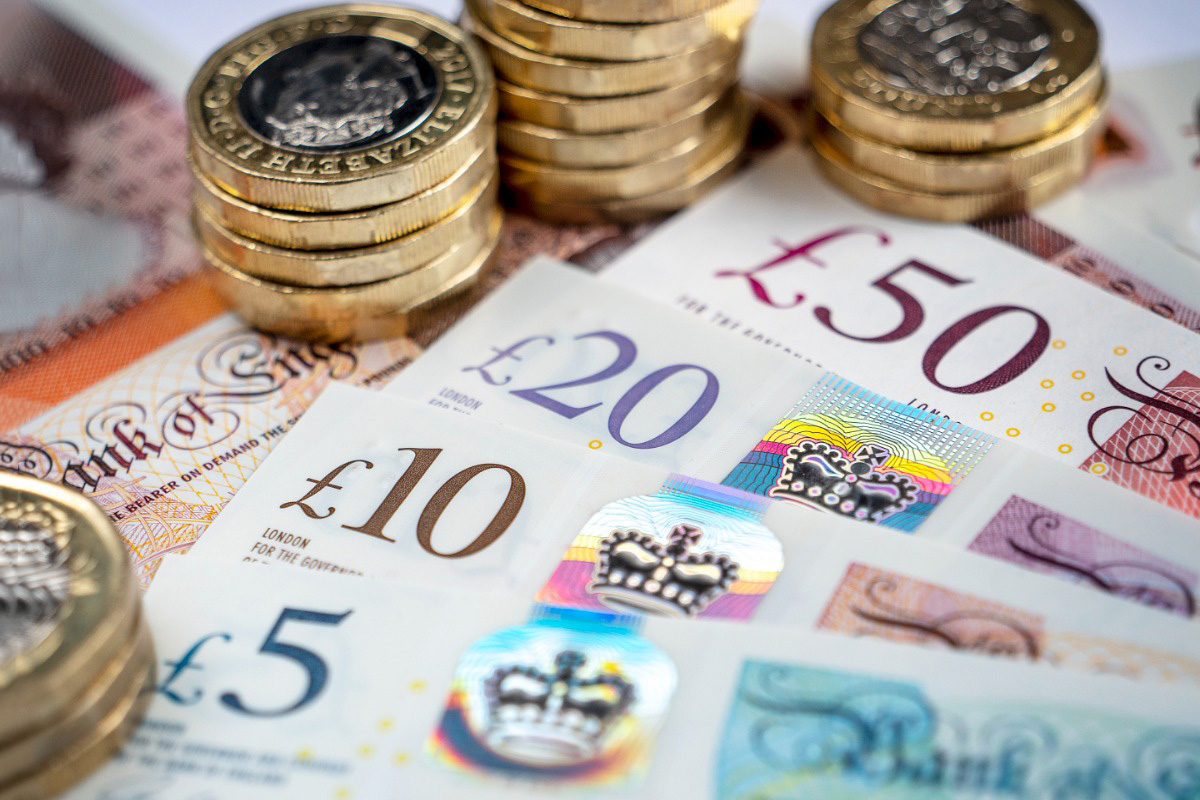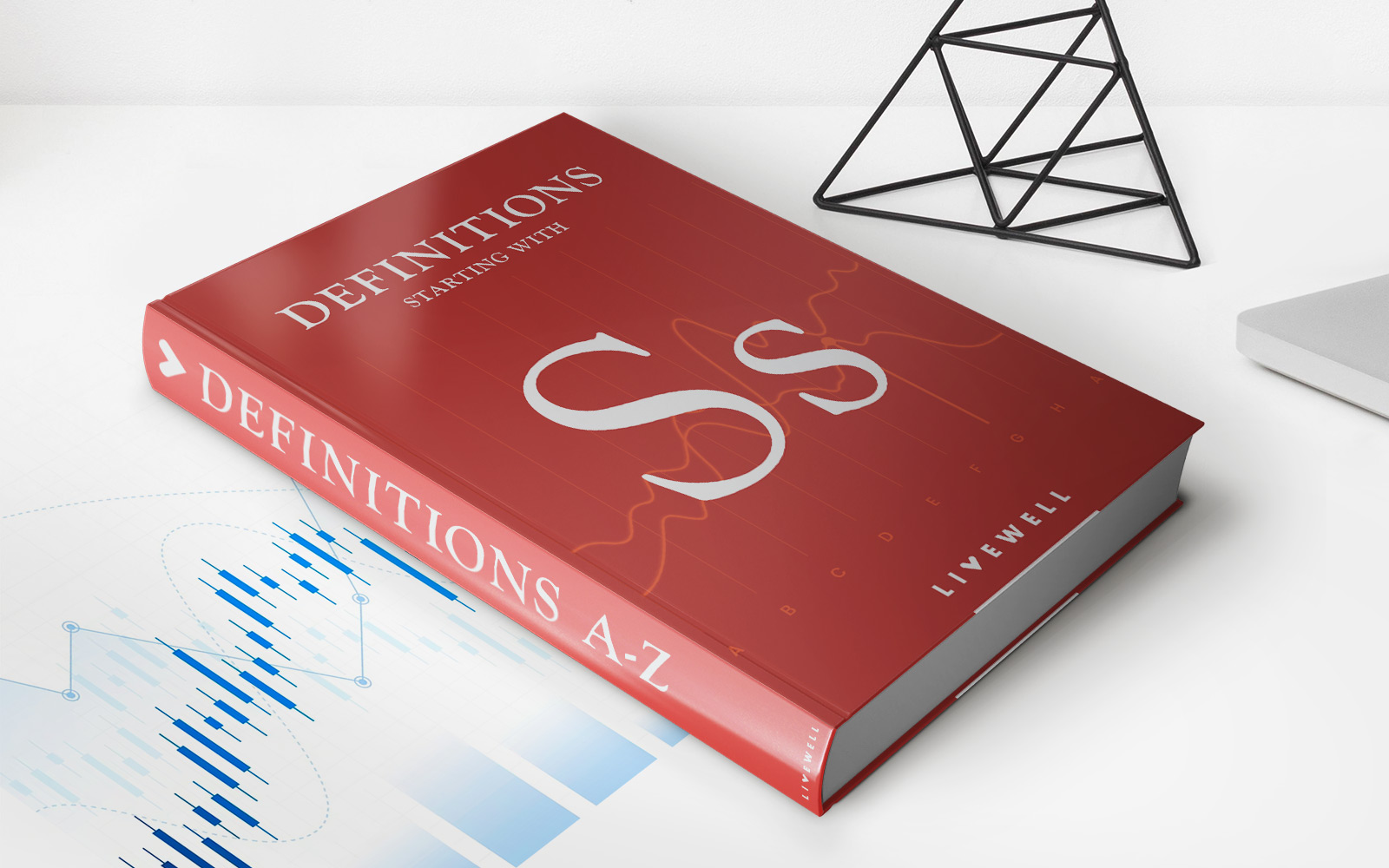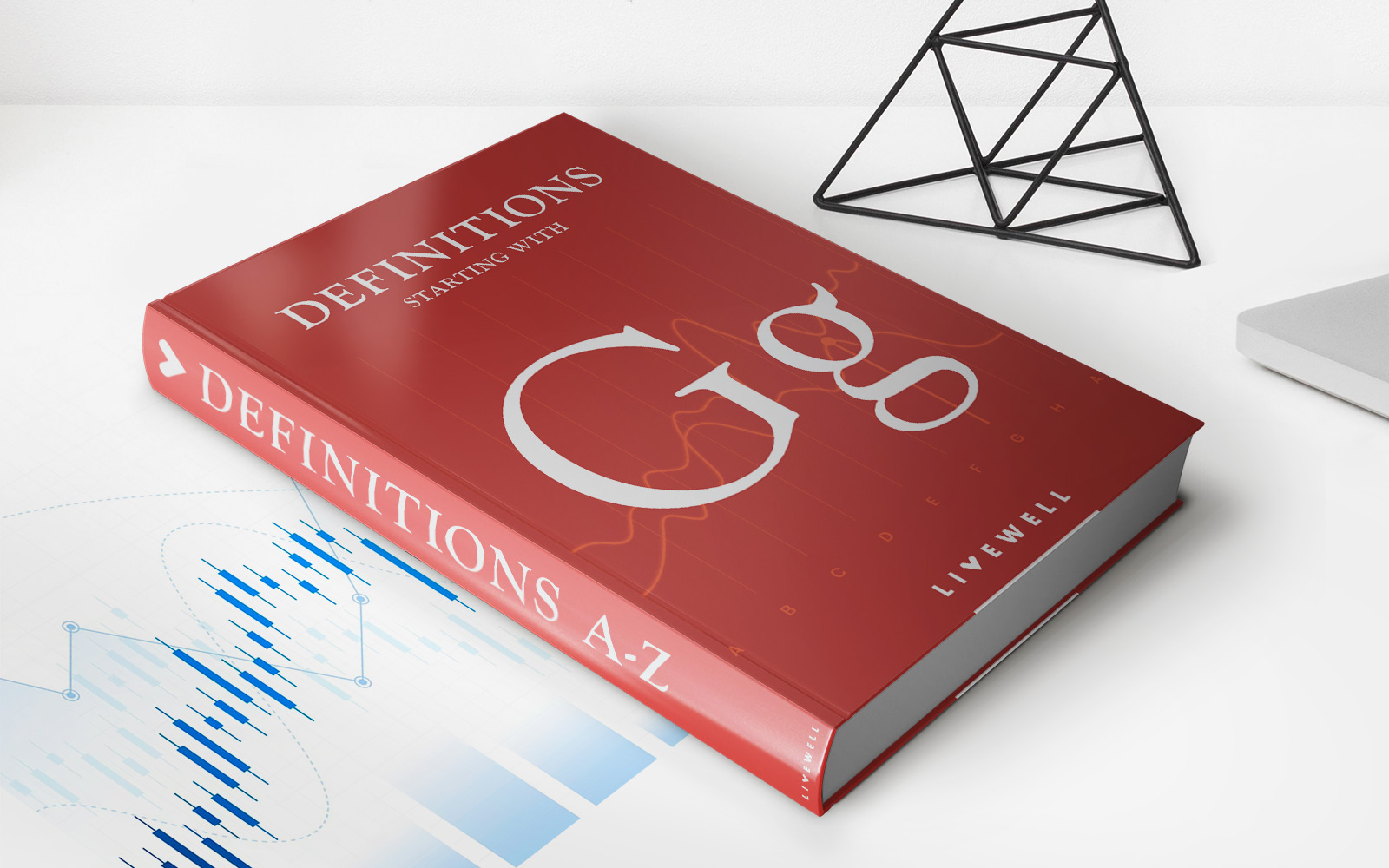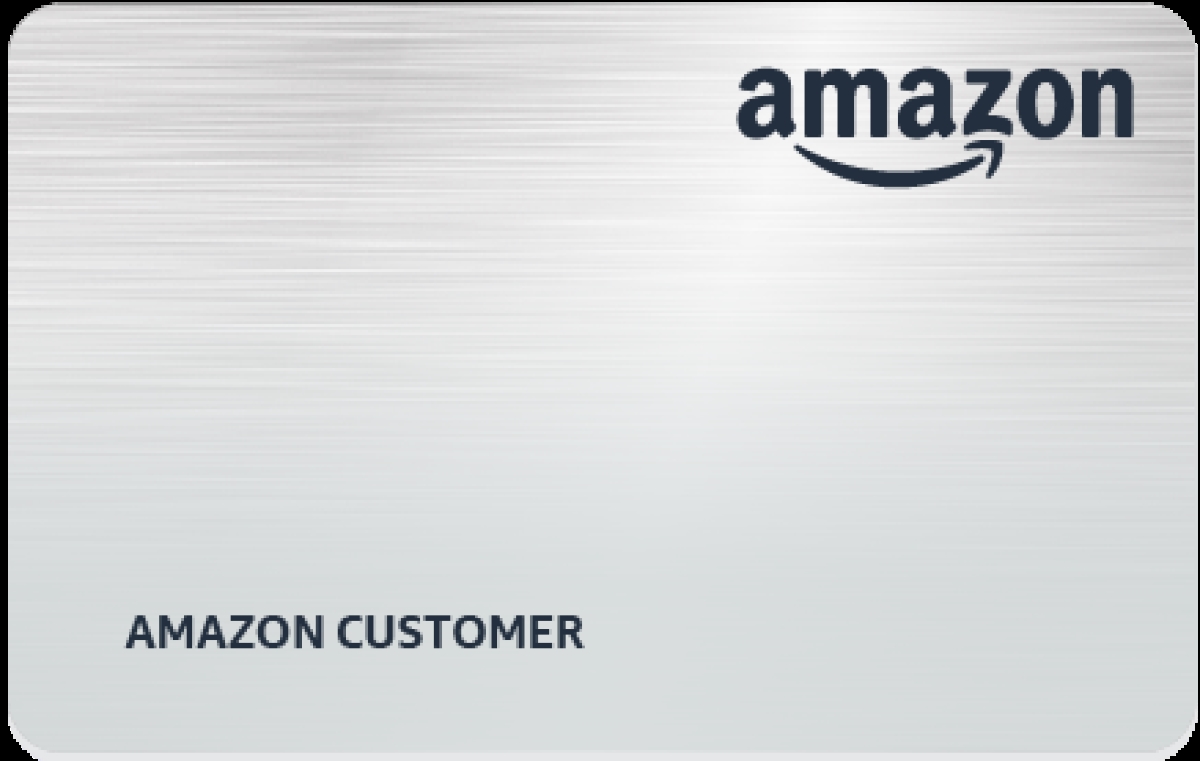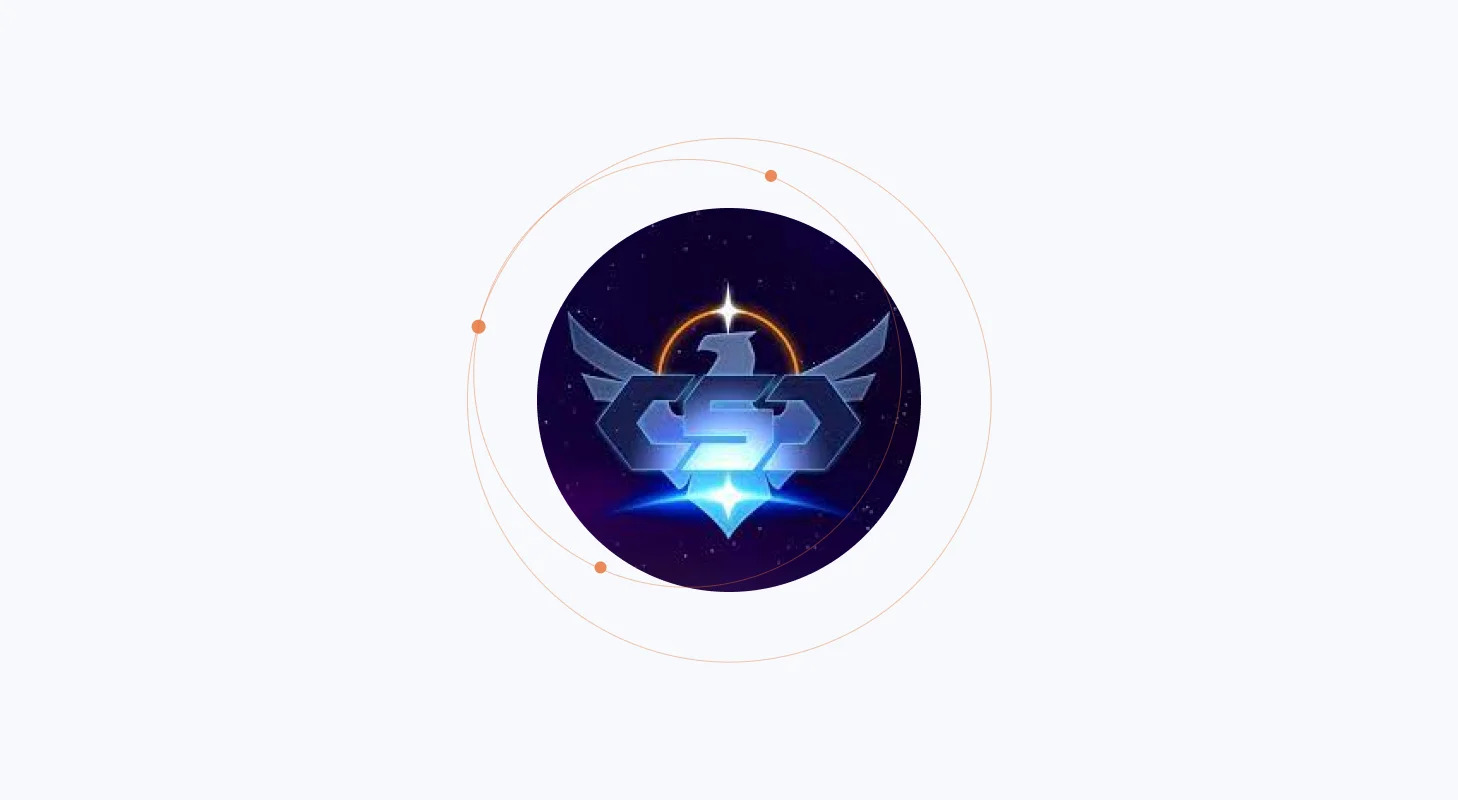

Finance
How To Build Blockchain Game
Published: October 23, 2023
Discover how to build your own blockchain game in the finance industry with our comprehensive guide. Learn the ins and outs of game development, blockchain technology, and financial integration.
(Many of the links in this article redirect to a specific reviewed product. Your purchase of these products through affiliate links helps to generate commission for LiveWell, at no extra cost. Learn more)
Table of Contents
- Introduction
- Understanding Blockchain Technology
- Overview of Blockchain Games
- Choosing the Right Blockchain Platform
- Designing the Game Mechanics
- Developing the Blockchain Game
- Implementing Smart Contracts
- Integrating Non-Fungible Tokens (NFTs)
- Creating a Decentralized Game Economy
- Testing and Security Considerations
- Launching and Marketing Your Blockchain Game
- Conclusion
Introduction
Welcome to the exciting world of blockchain games! In recent years, blockchain technology has gained immense popularity, revolutionizing various industries including finance, supply chain management, and even gaming. The merging of blockchain and gaming has opened up new possibilities for developers and enthusiasts alike.
In this article, we will delve into the fascinating realm of blockchain games and explore how you can build your own. From understanding the basics of blockchain technology to designing game mechanics, implementing smart contracts, and launching your game, we will cover all the essential steps to help you embark on your blockchain gaming journey.
Blockchain technology, originally popularized by cryptocurrencies like Bitcoin, is a decentralized and immutable ledger that records transactions in a secure and transparent manner. Unlike traditional centralized systems, blockchain eliminates the need for intermediaries, ensuring trust, security, and transparency for every participant.
Blockchain games leverage this technology to bring unprecedented benefits to the gaming industry. By using blockchain, games can offer true ownership of in-game assets, provable scarcity of virtual items, and secure peer-to-peer transactions. This introduces a new paradigm where players can truly own and trade their digital assets, making the gaming experience more immersive and rewarding.
Before diving into the technical aspects of building a blockchain game, it is crucial to understand the underlying principles and potential of this innovative technology. By doing so, you will be better equipped to harness its power and create a game that stands out in the ever-evolving landscape of blockchain gaming.
In the following sections, we will explore the different components and considerations involved in building a blockchain game. From choosing the right blockchain platform and designing game mechanics to implementing smart contracts and creating a decentralized game economy, we will guide you through each step of the process.
So, whether you’re a seasoned game developer looking to explore new horizons or a blockchain enthusiast eager to put your skills to the test, this article will serve as your comprehensive guide on how to build your own blockchain game. Let’s get started!
Understanding Blockchain Technology
Before diving into the world of blockchain games, it is essential to have a solid understanding of the underlying blockchain technology. At its core, a blockchain is a decentralized and immutable ledger that records transactions across multiple computers, ensuring transparency and security. Let’s explore some key aspects of blockchain technology:
Decentralization: Unlike traditional centralized systems that rely on a central authority, blockchain operates on a decentralized network of computers called nodes. These nodes work together to validate, record, and secure transactions, eliminating the need for a middleman.
Immutability: Once a transaction is recorded on a blockchain, it is almost impossible to alter or erase. This immutability is achieved through cryptographic algorithms that verify and link each block of data to the previous one, creating a chain of blocks that are resistant to tampering.
Transparency: Blockchain provides complete transparency as every transaction is visible to all participants. This transparency not only prevents fraud but also enhances trust as users can verify and track the history of transactions.
Security: Due to its decentralized nature and cryptographic algorithms, blockchain technology provides a high level of security. Transactions are encrypted, and any attempt to alter the data would require an overwhelming majority of nodes to agree, making it virtually impossible for malicious actors to manipulate the system.
Smart Contracts: Smart contracts are self-executing contracts with predefined rules and conditions written in code. These contracts automatically facilitate, verify, and enforce the terms of an agreement without the need for intermediaries. Smart contracts are an integral part of many blockchain games as they enable automated and trustless interactions between players.
Now that we have a basic understanding of blockchain technology let’s explore how this technology is transforming the gaming industry through blockchain games.
Overview of Blockchain Games
Blockchain games, also known as decentralized games or dApps (decentralized applications), are a new breed of online games that leverage blockchain technology to provide unique and immersive gaming experiences.
Traditionally, in-game assets and currencies are owned and controlled by game developers or publishers. This limits players’ ability to trade or sell their virtual possessions outside of the game’s ecosystem. Blockchain games, on the other hand, empower players with true ownership and control over their in-game assets.
One of the fundamental concepts in blockchain games is the use of non-fungible tokens (NFTs). Unlike cryptocurrencies like Bitcoin which are interchangeable with each other, NFTs represent unique and indivisible digital assets such as characters, items, or land within a game. Each NFT is cryptographically secured on the blockchain, providing irrefutable proof of ownership.
Blockchain games offer several benefits to players and developers:
- True Ownership: In a blockchain game, players have true ownership of their in-game assets. They can trade, sell, or even loan their NFTs to other players without any restrictions or limitations imposed by the game developers.
- Provable Scarcity: Blockchain games can ensure the scarcity of virtual items by creating limited quantities of NFTs. This scarcity adds value to the assets and makes them more desirable and collectible.
- Immutable Record: Transactions related to in-game asset ownership and transfers are recorded on the blockchain, creating an immutable and transparent record. This prevents fraudulent activities and enhances trust between players.
- Player-driven Economy: With true ownership and the ability to trade assets freely, blockchain games foster a player-driven economy. Players can earn in-game currency or assets by participating in the game and sell them for real-world value.
- Incentivized Gameplay: Blockchain games can incentivize players by offering rewards in the form of tokens or NFTs for various achievements and contributions to the game’s ecosystem.
Blockchain games come in various forms, including role-playing games, strategy games, collectible card games, and virtual world simulations. Some notable examples of successful blockchain games include CryptoKitties, Decentraland, and Gods Unchained.
The popularity of blockchain games is steadily increasing as more developers enter the space and innovative gameplay mechanics are introduced. Building your own blockchain game allows you to tap into this growing market and offer players a unique gaming experience.
Choosing the Right Blockchain Platform
When it comes to building a blockchain game, choosing the right blockchain platform is a crucial decision. The platform you select will determine the technical capabilities, scalability, and flexibility of your game. Here are some factors to consider when choosing a blockchain platform:
1. Ethereum: Ethereum is one of the most popular blockchain platforms for building decentralized applications, including blockchain games. It offers robust smart contract functionality, a large developer community, and a wide range of tooling and resources. However, Ethereum’s scalability limitations and high transaction fees should be considered, especially for games with high on-chain activity.
2. EOSIO: EOSIO is another prominent blockchain platform that aims to provide high throughput and low latency for decentralized applications. It offers a more scalable solution compared to Ethereum, making it suitable for games with real-time interactions. EOSIO also provides a user-friendly development environment and ample documentation.
3. TRON: TRON is a blockchain platform focused on building decentralized entertainment applications. It boasts high transaction throughput and low cost, making it an attractive option for blockchain games. TRON has gained popularity in the gaming industry with numerous games already built on its platform.
4. Binance Smart Chain (BSC): Binance Smart Chain is a blockchain platform that runs parallel to the Binance Chain. It offers compatibility with the Ethereum Virtual Machine (EVM), allowing developers to easily port their Ethereum-based games to BSC. BSC provides fast and low-cost transactions, making it appealing for developers looking to leverage Ethereum’s ecosystem with lower fees.
5. Other Blockchains: Apart from the aforementioned options, there are several other blockchain platforms that cater to specific use cases and offer unique features. For example, Flow is designed for creating interactive and collectible experiences, while Immutable X focuses on scalability and gas-free transactions.
When selecting a blockchain platform, consider factors such as technical requirements, development resources, community support, transaction costs, scalability, and interoperability with other platforms. It’s crucial to evaluate the platform’s ecosystem and infrastructure to ensure it aligns with your game’s requirements and long-term vision.
It’s also worth noting that many blockchain platforms support interoperability through standards like ERC-721 (Ethereum), TRC-721 (TRON), and WAX. Interoperability allows players to transfer and trade assets across different blockchain games and enhances the overall value and liquidity of in-game assets.
By carefully evaluating the different blockchain platforms and their features, you can choose the one that best suits your game’s needs, ensuring a solid foundation for your blockchain game development journey.
Designing the Game Mechanics
Designing the game mechanics is a crucial step in creating an engaging and immersive blockchain game experience. The game mechanics define the rules, interactions, and challenges that players will encounter, and they play a vital role in shaping the overall gameplay. Here are key considerations when designing the game mechanics for your blockchain game:
- Game Genre: Determine the genre of your game, whether it’s a role-playing game, strategy game, card game, or a combination of various genres. Each genre has its own unique gameplay elements and mechanics, so choose one that aligns with your vision and target audience.
- Goal and Progression: Define the main objective of the game and how players will progress through the game. Will it be a quest-based game where players complete missions to earn rewards? Or will it be a competitive game where players strive to climb leaderboards? Establishing clear goals and a sense of progression keeps players engaged and motivated.
- Virtual Economy: Design the in-game economy, including the earning and spending mechanics. Determine how players will acquire in-game currency or resources and how they can use them to upgrade their characters or purchase rare items. Consider creating a balanced and sustainable economy to prevent inflation or scarcity issues.
- Player Interactions: Decide how players will interact with each other within the game. Will there be collaborative gameplay, allowing players to form teams or guilds? Will there be player-versus-player (PvP) battles or trading mechanisms? Creating social interactions and fostering a sense of community enhances the overall player experience.
- Rewards and Incentives: Determine the rewards and incentives system to motivate and reward players for their achievements. Consider incorporating both intrinsic rewards (such as in-game achievements and progress) and extrinsic rewards (such as NFTs or in-game currency). Strive to create a balanced reward system that provides meaningful incentives without disrupting the game’s economic balance.
- Randomness and Probability: Introduce elements of randomness and probability to add excitement and unpredictability to the game. This can be achieved through random events, loot drops, or chance-based outcomes. However, ensure that the randomness does not unduly favor certain players or lead to frustration.
- Persistence and Progression: Determine how the game state will persist on the blockchain. Consider how players’ progress, in-game assets, and achievements will be stored and retrieved securely using smart contracts. This ensures that players have a consistent and accessible experience across different devices and can retain their progress even if they switch platforms.
Iterate and playtest your game mechanics to gather feedback and make necessary adjustments. Balancing game mechanics is an ongoing process, and listening to the community’s feedback can help improve the overall player experience.
Remember, the game mechanics should not only be enjoyable but also leverage the unique features of blockchain technology. Consider how blockchain can enhance aspects such as ownership, digital scarcity, and secure transactions within the game. By incorporating blockchain-specific mechanics, you can create a game that truly harnesses the power of this transformative technology.
In the next section, we will explore the development process of your blockchain game, from coding smart contracts to integrating non-fungible tokens (NFTs).
Developing the Blockchain Game
Developing a blockchain game involves a combination of traditional game development practices and implementing blockchain-specific functionalities. The process typically starts with coding the smart contracts, which govern the game logic and interactions on the blockchain. Here are the key steps involved in developing a blockchain game:
- Coding Smart Contracts: Smart contracts are at the heart of a blockchain game. These self-executing contracts are written in programming languages such as Solidity (for Ethereum) or C++ (for EOSIO), and they define the game rules, asset ownership, and transactions on the blockchain. Smart contracts must be thoroughly tested and audited for security and reliability.
- Integrating Game Logic: Once the smart contracts are in place, you need to integrate them with the game’s client-side logic. This involves connecting the game’s user interface (UI) and backend systems to interact seamlessly with the smart contracts. The game client communicates with the blockchain to retrieve data and execute transactions.
- User Wallet Integration: To facilitate transactions and asset ownership, integrate user wallet functionality into your game. Users should be able to connect their wallets (such as MetaMask for Ethereum) to interact with the game, sign transactions, and manage their in-game assets securely.
- Implementing Off-chain Components: Not all game interactions need to be processed on the blockchain. To ensure scalability and reduce transaction costs, consider implementing off-chain components such as game servers, matchmaking systems, and chat functionality. These components can communicate with the blockchain when necessary and handle non-critical game logic.
- Frontend Design and User Experience: Design an intuitive and visually appealing frontend for your game. Consider the user experience, including navigation, character customization, gameplay tutorials, and feedback mechanisms. Strive to create an engaging and immersive experience that keeps players coming back for more.
- Testing and Quality Assurance: Thoroughly test your game for bugs, vulnerabilities, and performance issues. Conduct unit testing, integration testing, and stress testing to ensure the game functions as intended and can handle peak loads. Consider engaging beta testers to provide feedback and identify any areas for improvement.
- Security Considerations: Security is paramount in blockchain games. Implement measures to protect user wallets, prevent unauthorized access, and safeguard against potential exploits. Regularly update your smart contracts to patch any discovered vulnerabilities and stay informed about security best practices within the blockchain community.
Developing a blockchain game requires a strong understanding of game development principles, programming languages, and blockchain technologies. It is recommended to have a dedicated team of developers, including blockchain specialists, game designers, and UI/UX experts, to ensure a smooth and successful development process.
As the game development progresses, consider engaging with the blockchain gaming community, participating in game jams and hackathons, and networking with other developers to gather insights and stay up-to-date with the latest trends and innovations in the industry.
In the next section, we will explore the integration of non-fungible tokens (NFTs) into your blockchain game and how they enhance player experiences.
Implementing Smart Contracts
Implementing smart contracts is a crucial step in building a blockchain game. Smart contracts are self-executing contracts that contain the game logic and rules, ensuring the transparency, security, and immutability of in-game interactions. Here are key considerations when implementing smart contracts for your blockchain game:
- Define Contract Structure: Start by defining the structure of your smart contract. Identify the various entities and functionalities that need to be implemented, such as player profiles, item ownership, game mechanics, and transaction handling.
- Design Game Mechanics: Determine the game mechanics and interactions that should happen on the blockchain. This may include character attributes, item stats, game progress, rewards, and resource management. Map out the necessary smart contract functions and data structures based on these game mechanics.
- Implement Ownership: Smart contracts enable true ownership of in-game assets by using non-fungible tokens (NFTs). Implement the logic for minting, transferring, and verifying the ownership of NFTs representing characters, items, or other virtual assets.
- Transaction Handling: Develop functions and mechanisms for handling transactions within the game. This includes buying and selling assets, exchanging in-game currency, and initiating game-related activities triggered by player actions.
- Game Logic Validation: Ensure that the smart contract enforces all the necessary game rules and validations. This helps prevent cheating, ensures fair gameplay, and maintains the integrity of the game ecosystem.
- Escrow and Payment Handling: Implement mechanisms to securely hold and distribute payments within the smart contract. This is especially important for features such as auctions, marketplaces, and prize distributions.
- Gas Optimization: Gas optimization is crucial for blockchain games to minimize transaction costs and improve efficiency. Employ techniques such as avoiding unnecessary storage updates, batching transactions, and using well-optimized data structures within your smart contracts.
- Security Audits and Upgradability: Ensure that your smart contracts are audited by security experts to identify and mitigate any vulnerabilities or risks. Additionally, consider implementing upgradability mechanisms in your smart contract to allow for future updates and improvements without disrupting the game.
Implementing smart contracts requires expertise in programming languages such as Solidity (for Ethereum), C++ (for EOSIO), or similar languages supported by your chosen blockchain platform. It is essential to thoroughly test and iterate on your smart contracts to ensure their reliability and functionality.
As the game progresses, the smart contracts may need to be upgraded or improved. Plan for the upgradability of your smart contracts from the beginning, considering mechanisms like proxy contracts or upgradeable contracts. This allows you to introduce new features or fix issues without compromising the existing game state or disrupting player experiences.
Consider engaging with the blockchain developer community, attending developer conferences, and participating in hackathons to further your knowledge and receive valuable feedback from experts in the field.
In the next section, we will explore the integration of non-fungible tokens (NFTs) within your blockchain game and the benefits they bring to the gaming experience.
Integrating Non-Fungible Tokens (NFTs)
Integrating non-fungible tokens (NFTs) is a key aspect of building a blockchain game. NFTs enable the representation of unique and indivisible in-game assets, allowing players to truly own and trade their virtual possessions. Here are the steps involved in integrating NFTs into your blockchain game:
- Define Asset Types: Determine the various types of in-game assets that will be represented by NFTs. These could include characters, weapons, accessories, virtual land, or other unique items. Each asset type should have its own set of properties and attributes.
- Design Token Standard: Choose a token standard for your NFTs, such as ERC-721 (Ethereum) or TRC-721 (TRON). This standard defines the required functions and properties for the NFT contract, including token minting, transfer, and ownership validation.
- Create Metadata: Generate metadata for each NFT, including attributes, images, descriptions, and any additional information that enhances the visual and descriptive qualities of the asset. Metadata is typically stored off-chain and referenced by the NFT contract using IPFS or similar decentralized storage solutions.
- Minting and Distribution: Implement the logic for minting new NFTs based on specific conditions, such as completing in-game achievements or winning battles. Consider mechanisms for distributing these NFTs fairly and transparently to players, ensuring a balanced and rewarding gameplay experience.
- Ownership Verification: Develop functions within the smart contract to verify the ownership of NFTs. This ensures that players can securely trade, sell, or use their in-game assets within the game ecosystem.
- Marketplace Integration: Consider integrating a marketplace within your blockchain game where players can buy, sell, and trade NFTs. This can be a central marketplace or decentralized exchange that facilitates peer-to-peer transactions, providing liquidity and fostering an active player-driven economy.
- Interoperability: Explore opportunities for interoperability with other blockchain games and platforms. By embracing standards like ERC-721 or creating bridges with other blockchain ecosystems, you can allow players to transfer, trade, or use their NFTs across multiple games, expanding the utility and value of their in-game assets.
- Gameplay Integration: Finally, design gameplay mechanics that leverage NFTs. This could include enhancing character abilities based on the attributes of equipped NFTs, unlocking special abilities or levels with specific NFT combinations, or enabling players to use NFTs as part of in-game strategies.
Integrating NFTs into your blockchain game elevates the player experience by providing true ownership and value to in-game assets. It unlocks new possibilities for players to customize, collect, trade, and showcase their unique items, creating a vibrant and active gaming ecosystem.
Keep in mind that the success of NFT integration relies on creating a diverse and captivating ecosystem of assets, ensuring a fair distribution mechanism, and maintaining an engaged community of players. Continuously iterate and adapt your NFT integration based on player feedback and market trends to deliver a compelling and rewarding player experience.
In the next section, we will explore the creation of a decentralized game economy and how it enhances the sustainability and longevity of your blockchain game.
Creating a Decentralized Game Economy
A decentralized game economy is a key component of a successful blockchain game. It involves designing an economic system that is driven by player interactions and facilitates the exchange of in-game assets and currencies. Here are the steps to create a decentralized game economy:
- In-Game Currency: Design and implement an in-game currency that players can earn and use within the game ecosystem. This currency can be used for various purposes such as purchasing items, upgrading characters, or participating in in-game activities. Ensure that the currency has value and utility within the game to incentivize player engagement.
- Resource Management: Determine how resources within the game will be created, distributed, and managed. Resources can include crafting materials, energy, or any other limited assets. Implement mechanisms that allow players to obtain resources through gameplay or trading, and ensure a balance between scarcity and availability to drive player interactions.
- Player-to-Player Trading: Enable direct player-to-player trading of in-game assets and currencies. This can be facilitated through decentralized marketplaces or peer-to-peer transactions supported by smart contracts. Implementing a secure and transparent trading system enhances player engagement and fosters a vibrant player-driven economy.
- Reward Systems: Establish reward systems that incentivize players for their achievements and contributions to the game ecosystem. Consider offering in-game rewards such as rare items, unique NFTs, or additional in-game currency for completing quests, achieving high scores, or participating in community events.
- Economy Balancing: Continuously monitor and balance the in-game economy to prevent inflation or deflation. Adjust rewards, costs, and availability of assets or currency to maintain a healthy and sustainable game economy. Regularly engage with the player community to gather feedback and implement necessary adjustments.
- Decentralized Governance: Consider implementing decentralized governance mechanisms to allow players to participate in decision-making processes. This can involve voting on game updates, new features, or changes to the economy. Empowering players to have a voice in shaping the game fosters a sense of ownership and community involvement.
- Economic Interoperability: Explore opportunities for economic interoperability with other blockchain games or platforms. This can involve creating bridges and standards that allow players to transfer assets or currencies across different games, expanding their utility and fostering a larger player-driven ecosystem.
Creating a decentralized game economy requires careful planning, monitoring, and adjustment. It is important to strike a balance between providing meaningful rewards to players while maintaining the integrity and sustainability of the game ecosystem. Active engagement with the player community and responsive adjustments based on feedback are key to building a thriving and sustainable game economy.
A successful decentralized game economy should also foster a sense of fairness and inclusivity, ensuring that players of all skill levels and financial backgrounds have opportunities to participate and succeed. Emphasize community-driven initiatives, events, and collaborations to encourage player interaction and promote the growth of the game ecosystem.
In the next section, we will explore the testing and security considerations for your blockchain game to ensure a secure and seamless playing experience.
Testing and Security Considerations
Testing and security are crucial aspects of developing a blockchain game. Thorough testing ensures that your game functions as intended and provides a smooth and seamless playing experience. Security measures help protect player assets, prevent fraud, and mitigate potential vulnerabilities. Here are some testing and security considerations for your blockchain game:
- Unit Testing: Perform comprehensive unit testing on individual components and functionalities of your game to identify and fix any bugs or issues at an early stage. This includes testing smart contracts, game mechanics, user interfaces, and any external integrations. Utilize testing frameworks and tools specific to your chosen blockchain platform.
- Integration Testing: Conduct integration testing to ensure that different components of your game, including smart contracts, game servers, user interfaces, and off-chain systems, work seamlessly together. Test various scenarios and interactions to identify any potential conflicts or performance issues.
- Security Audits: Engage reputable third-party security auditors to conduct thorough audits of your smart contracts and game infrastructure. They can help identify vulnerabilities, potential attack vectors, and suggest improvements to enhance the security of your game. Regularly update your smart contracts based on the audit findings.
- Player Feedback: Invite players or a dedicated group of beta testers to provide feedback on your game. This can help identify usability issues, user experience improvements, and any unforeseen problems that may have been missed during development and testing. Actively communicate with the player community to address their concerns and gather insights for future updates.
- Security Measures: Implement appropriate security measures to protect player assets and ensure the integrity of your game. This includes secure user wallet integration, encrypted data storage, secure communication channels, and preventing unauthorized access to sensitive systems or APIs. Regularly patch and update your game’s infrastructure to address any security vulnerabilities that may arise.
- External Integrations: If your game integrates with external services or platforms, carefully research and evaluate their security protocols and API integrations. Ensure you follow best practices when handling and transmitting user data to maintain the privacy and security of player information.
- Player Education: Educate players about best security practices, such as securing their wallets and understanding potential scams or phishing attempts. Provide clear instructions on how to protect their assets and report any suspicious activities within the game.
- Regulatory Compliance: Stay informed about regulatory requirements in your jurisdiction, especially if your game involves real-world value transactions. Be aware of any legal obligations, such as KYC (Know Your Customer) procedures or restrictions on certain types of transactions.
Continuously monitor and update your security measures based on emerging threats and industry best practices. Regularly release updates and patches to address any identified vulnerabilities or issues. Establish a response plan in case of security incidents or breaches and communicate transparently with your player community to maintain trust and confidence.
By prioritizing testing and security considerations throughout the development lifecycle, you can ensure a secure and enjoyable gaming experience for your players.
In the next section, we will explore the important steps in launching and marketing your blockchain game to maximize its reach and success.
Launching and Marketing Your Blockchain Game
Launching and marketing your blockchain game effectively is crucial to attract players, build a community, and ensure the success of your game. Here are key steps to consider when launching and marketing your blockchain game:
- Create a Compelling Brand: Develop a strong brand identity that captures the essence of your game and resonates with your target audience. Design a visually appealing logo, website, and promotional materials that reflect the unique features and gameplay experience of your game.
- Build a Community: Engage with potential players and build a community around your game before launch. Create social media accounts, join relevant forums and communities, and actively share updates, behind-the-scenes content, and development progress. Encourage interaction and feedback from the community to foster a sense of ownership and build anticipation.
- Create a Marketing Plan: Develop a comprehensive marketing plan that outlines the strategies and channels you will use to reach your target audience. Consider a mix of digital marketing techniques such as social media advertising, content marketing, influencer partnerships, and community outreach.
- Launch on Blockchain-specific Platforms: Leverage blockchain-specific platforms and marketplaces to launch your game. These platforms have existing communities of blockchain enthusiasts who might be interested in playing your game. Some popular platforms include Ethereum’s decentralized app (dApp) stores, TRON Arcade, or Binance Launchpad.
- Engage Influencers: Collaborate with influential content creators and influencers in the blockchain gaming space. They can help generate buzz around your game by featuring it in their content, creating gameplay videos, or organizing giveaways. Influencers have the potential to reach a wide audience and attract new players to your game.
- Organize Events and Contests: Organize virtual events, tournaments, and contests that engage the community and incentivize participation. Consider offering exclusive in-game items, rare NFTs, or other rewards to attract and motivate players to join and spread the word about your game.
- Optimize for App Stores and Search Engines: If your game has a mobile or web version, optimize it for app stores and search engines. Optimize your game’s description, keywords, and screenshots to increase visibility and improve search rankings, making it easier for potential players to discover and download your game.
- Engage Press and Media: Reach out to relevant gaming, blockchain, and technology media outlets to generate press coverage and reviews of your game. Craft a compelling press release and pitch tailored to each outlet, highlighting the unique features, gameplay mechanics, and innovative aspects of your blockchain game.
- Cross-Promotion and Partnerships: Collaborate with other blockchain game developers or related projects for cross-promotion and partnerships. Joint marketing efforts can expand your reach and introduce your game to new audiences. Consider collaborating on promotional events, special in-game events, or shared rewards systems to boost player engagement and retention.
Continuously monitor and analyze the effectiveness of your marketing strategies to refine your approach and optimize your efforts. Pay attention to user feedback and engagement metrics to gauge the success of your marketing initiatives and make data-driven decisions for future campaigns.
Remember, the marketing journey doesn’t end with the game launch. Maintain an active presence within the community, regularly release updates and new content, and listen to the feedback and suggestions of your players. By cultivating a passionate and engaged player base, your game has a better chance of sustained success and growth in the dynamic world of blockchain gaming.
In the final section, we will summarize the key points and conclude our guide on how to build your own blockchain game.
Conclusion
Building a blockchain game offers a unique opportunity to create immersive and engaging experiences while leveraging the benefits of decentralization, true asset ownership, and player-driven economies. Throughout this guide, we have explored the key steps and considerations involved in building your own blockchain game, from understanding the fundamentals of blockchain technology to designing game mechanics, implementing smart contracts, integrating non-fungible tokens (NFTs), and creating a decentralized game economy.
As you embark on your journey to build a blockchain game, remember to keep the following in mind:
First, choose the right blockchain platform that aligns with your game’s technical requirements, scalability needs, and community support. Consider platforms like Ethereum, EOSIO, TRON, or Binance Smart Chain, and explore interoperability options for wider asset utility.
Next, focus on designing captivating game mechanics that leverage the unique features of blockchain technology. Consider player interactions, reward systems, progression, and a balanced in-game economy to drive engagement and create a sense of ownership for players.
Implementing smart contracts and integrating non-fungible tokens (NFTs) enhances the security and transparency of in-game asset ownership. NFTs enable players to truly own and trade unique virtual items, fostering a vibrant player-driven economy and enabling new gameplay possibilities.
Testing and security are critical aspects of building a blockchain game. Thoroughly test your game mechanics, smart contracts, and security measures to ensure a seamless playing experience and protect player assets from potential vulnerabilities.
Finally, launching and marketing your blockchain game effectively is essential to attract players, build a community, and drive the success of your game. Build a strong brand, engage with the player community, utilize influencer partnerships, and leverage the power of blockchain-specific platforms and marketing channels.
Building a successful blockchain game requires a blend of technical expertise, creative game design, and a player-centric mindset. Continuously iterate, gather feedback, and adapt your game based on the evolving needs and desires of the community.
By following these steps and considering the insights shared in this guide, you are well on your way to building an exciting and innovative blockchain game that captures the imagination and involvement of players in the ever-evolving landscape of blockchain gaming.
